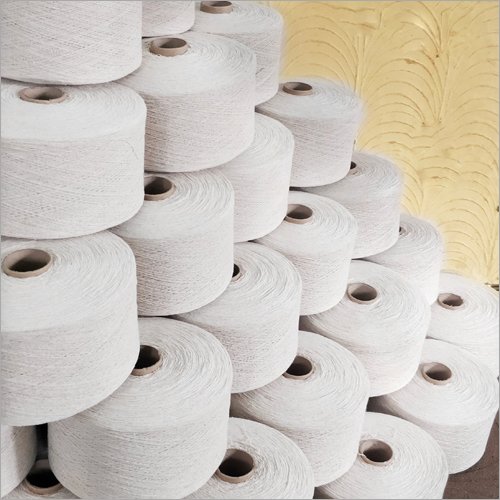In a world where environmental impact is becoming a top concern, industries are constantly seeking innovative ways to reduce waste, lower emissions, and promote sustainability. The textile industry, long criticized for its resource-heavy practices, is finding a powerful solution in recycled yarn.
But beyond the obvious eco-friendly appeal, recycled yarn offers a host of other benefits—some of which might surprise you.
Whether you’re a fashion designer, a textile manufacturer, or an eco-conscious consumer, here are 10 surprising benefits of using recycled yarn in textiles that prove it’s more than just a green trend.
1. Reduces Textile Waste in Landfills
One of the most impactful benefits of recycled yarn is its ability to reduce the amount of textile waste that ends up in landfills. Every year, millions of tons of old garments and leftover fabric scraps are thrown away. Recycled yarn is often made by collecting, shredding, and re-spinning these materials—giving them a second life.
Key Insight:
By using recycled yarn, textile manufacturers help divert waste from landfills and close the loop in fashion production.
2. Saves Water — A Lot of It
Did you know that producing 1 kg of conventional cotton yarn can use up to 10,000 liters of water? In contrast, recycled yarn—especially recycled cotton yarn—uses significantly less water since the fibers have already been processed once.
Why It Matters:
In a world facing water scarcity, especially in countries like India, saving water through recycled yarn usage is both a smart and ethical choice.
3. Lower Energy Consumption
Creating yarn from scratch involves multiple energy-intensive steps: growing raw materials, harvesting, cleaning, spinning, dyeing, and more. With recycled fiber yarn, many of these steps are reduced or eliminated.
Bottom Line:
Recycled yarn production consumes less energy, resulting in lower emissions and helping businesses reduce their carbon footprint.
4. Reduces Dependence on Virgin Resources
Every roll of virgin cotton or synthetic fiber yarn requires land, chemicals, and time. Recycled yarn reduces this dependence on virgin raw materials like fresh cotton, petroleum-based polyester, or wool.
Eco Impact:
Less farming, less pollution, and fewer synthetic materials—using recycled yarn helps protect natural ecosystems.
5. Supports a Circular Textile Economy
In a circular economy, products are reused, remanufactured, or recycled instead of being discarded. Recycled yarn is at the heart of this approach. It turns waste back into raw material, ensuring that textiles are part of a sustainable lifecycle.
Who Benefits:
Manufacturers, consumers, and the environment—all gain when materials stay in use longer.
6. Versatility Across Textile Applications
Contrary to common myths, recycled yarn isn’t just for rough industrial fabrics. Thanks to advancements in recycling technology, it now comes in a variety of blends and textures—perfect for:
-
Fashion garments
-
Home furnishings
-
Knitting and weaving
-
Upholstery and carpets
In Short:
From t-shirts to sofa covers, recycled yarn is highly adaptable to many textile needs.
7. Cost-Effective for Bulk Textile Orders
While sustainable options are often considered expensive, recycled yarn can actually lower production costs in bulk orders. Manufacturers like RG Fibers in Panipat offer competitive rates for recycled cotton and open-end yarn, especially when working with leftover materials.
Bonus:
Some suppliers even provide free yarn samples for businesses testing recycled yarn in their supply chain.
8. Supports Ethical Branding
Today’s consumers are more eco-conscious than ever. By using recycled yarn, textile brands can showcase their commitment to sustainability. This not only attracts new customers but also builds long-term loyalty.
Fact:
A Nielsen report found that 66% of global consumers are willing to pay more for sustainable products.
9. Innovation in Design & Color
Recycled yarn doesn’t limit creativity—it enhances it. Many recycled yarns retain traces of original color, reducing the need for dyeing. Designers can create unique, multi-toned fabrics without additional chemical processing.
Creative Edge:
Each batch of recycled yarn can have slight variations, giving garments a one-of-a-kind aesthetic.
10. Helps Meet Global Sustainability Goals
Governments and international bodies like the United Nations are pushing for sustainable industrial practices under the Sustainable Development Goals (SDGs). Textile manufacturers using recycled yarn actively contribute to:
-
SDG 6: Clean water and sanitation
-
SDG 12: Responsible consumption and production
-
SDG 13: Climate action
For Businesses:
Using recycled yarn is not just ethical—it positions your brand as a leader in global sustainability efforts.
🌱 Final Thoughts: The Future is Recycled
Recycled yarn is more than just a trend—it’s a necessity for the future of textiles. With so many environmental, economic, and creative benefits, it offers a smart alternative to traditional yarns. From saving water to boosting your brand’s eco-appeal, recycled yarn proves that sustainability and profitability can go hand in hand.
✅ If you’re a textile manufacturer, fashion brand, or yarn supplier, now is the time to make the shift.
Explore options from leading recycled yarn manufacturers like RG Fibers in Panipat, who are setting industry standards in quality, innovation, and sustainability.
